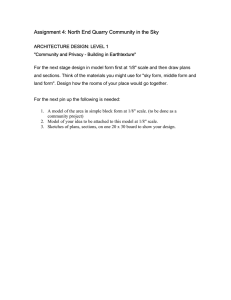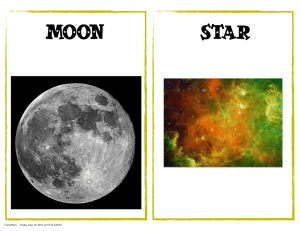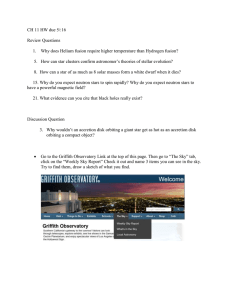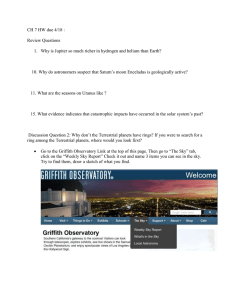APRIL 2012 ASTRONOMY
advertisement
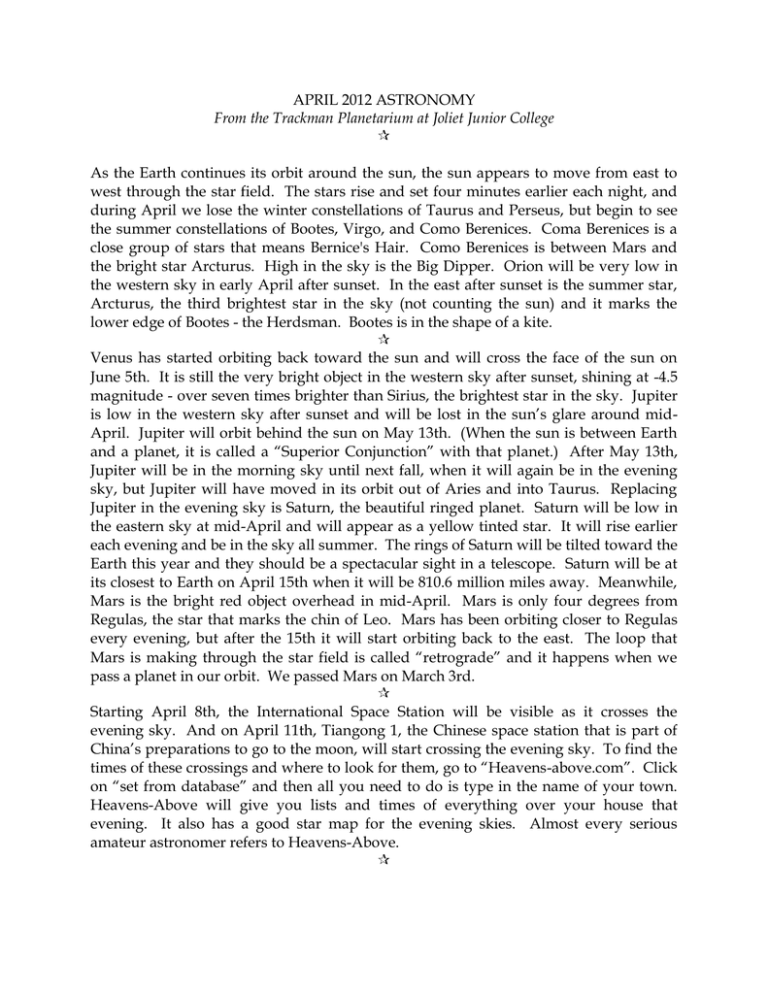
APRIL 2012 ASTRONOMY From the Trackman Planetarium at Joliet Junior College As the Earth continues its orbit around the sun, the sun appears to move from east to west through the star field. The stars rise and set four minutes earlier each night, and during April we lose the winter constellations of Taurus and Perseus, but begin to see the summer constellations of Bootes, Virgo, and Como Berenices. Coma Berenices is a close group of stars that means Bernice's Hair. Como Berenices is between Mars and the bright star Arcturus. High in the sky is the Big Dipper. Orion will be very low in the western sky in early April after sunset. In the east after sunset is the summer star, Arcturus, the third brightest star in the sky (not counting the sun) and it marks the lower edge of Bootes - the Herdsman. Bootes is in the shape of a kite. Venus has started orbiting back toward the sun and will cross the face of the sun on June 5th. It is still the very bright object in the western sky after sunset, shining at -4.5 magnitude - over seven times brighter than Sirius, the brightest star in the sky. Jupiter is low in the western sky after sunset and will be lost in the sun’s glare around midApril. Jupiter will orbit behind the sun on May 13th. (When the sun is between Earth and a planet, it is called a “Superior Conjunction” with that planet.) After May 13th, Jupiter will be in the morning sky until next fall, when it will again be in the evening sky, but Jupiter will have moved in its orbit out of Aries and into Taurus. Replacing Jupiter in the evening sky is Saturn, the beautiful ringed planet. Saturn will be low in the eastern sky at mid-April and will appear as a yellow tinted star. It will rise earlier each evening and be in the sky all summer. The rings of Saturn will be tilted toward the Earth this year and they should be a spectacular sight in a telescope. Saturn will be at its closest to Earth on April 15th when it will be 810.6 million miles away. Meanwhile, Mars is the bright red object overhead in mid-April. Mars is only four degrees from Regulas, the star that marks the chin of Leo. Mars has been orbiting closer to Regulas every evening, but after the 15th it will start orbiting back to the east. The loop that Mars is making through the star field is called “retrograde” and it happens when we pass a planet in our orbit. We passed Mars on March 3rd. Starting April 8th, the International Space Station will be visible as it crosses the evening sky. And on April 11th, Tiangong 1, the Chinese space station that is part of China’s preparations to go to the moon, will start crossing the evening sky. To find the times of these crossings and where to look for them, go to “Heavens-above.com”. Click on “set from database” and then all you need to do is type in the name of your town. Heavens-Above will give you lists and times of everything over your house that evening. It also has a good star map for the evening skies. Almost every serious amateur astronomer refers to Heavens-Above. The full moon is on April 6th and it is the “Full Pink Moon”. This name came from the herb moss pink, or wild ground phlox, which is one of the earliest widespread flowers of the spring. The sun starts April in the constellation of Pisces and moves eastward into Aries on April 18th where it will stay until the end of the month. Although the names of some of the 88 constellations were originated over 6 centuries ago, astronomers will still use them when they refer to a part of the sky. For an exact location, they use “Right Ascension” (east to west) and “Declination” (above or below the celestial equator) in the same way we use longitude and latitude to define a position on Earth, but they will still say that “Mars is in Leo this month“. The free public shows at the Trackman Planetarium during April are: Saturday April 7th at 2:30 pm (Solar System for Young People), April 10th at 7:30 pm (Navigating by the Stars), April 19th at 6:30 pm (Telescope Basics), April 24th at 7:30 pm (Seasonal Skies). All shows include a dome show and when practical, a tour through the real night sky. Joliet Junior College’s Department of Community and Continuing Education will offer a two day “Summer Camp” for young astronomy enthusiasts next August. The “camp” will be held in the evenings and will include telescope viewing (weather permitting) along with astronomy presentations. There will also be a Summer Camp for adults in August. More details will be available next month. Some visitors to the planetarium have asked how we are coming with our search for funds to replace “Old Spitz” - our almost 40 year old star projector. We are still looking for a grant to purchase a digital projector and star theater, but the cost is substantial and large grants are not readily available. Meanwhile “Old Sptiz” will continue to entertain and educate as it already has for over 300,000 visiting elementary school students, along with serving as a teaching tool for college astronomy classes. (If you know anyone with deep pockets, please give them our number!) ¶ Art Maurer Director -Trackman Planetarium Joliet Junior College (amaurer@jjc.edu <mailto:(amaurer@jjc.edu>
